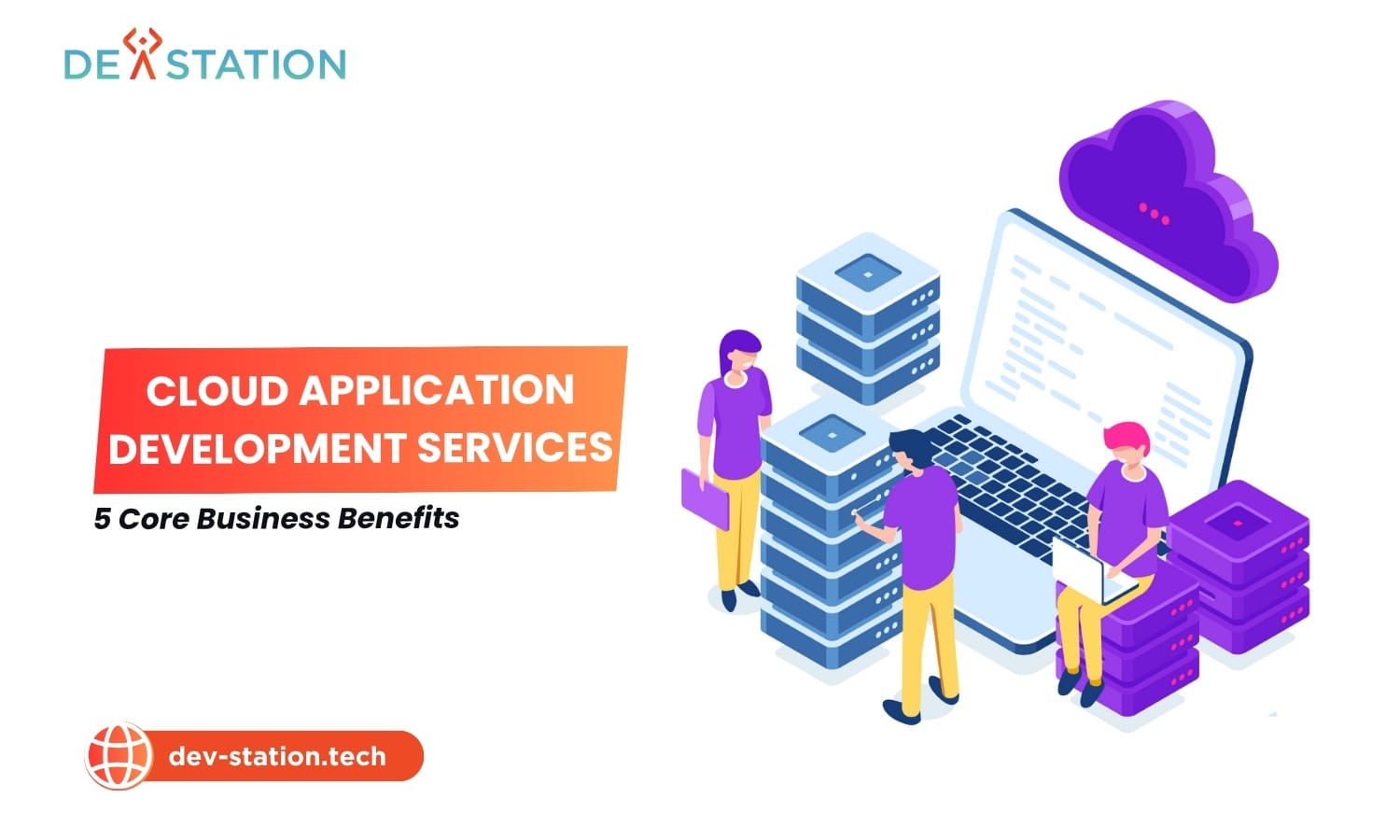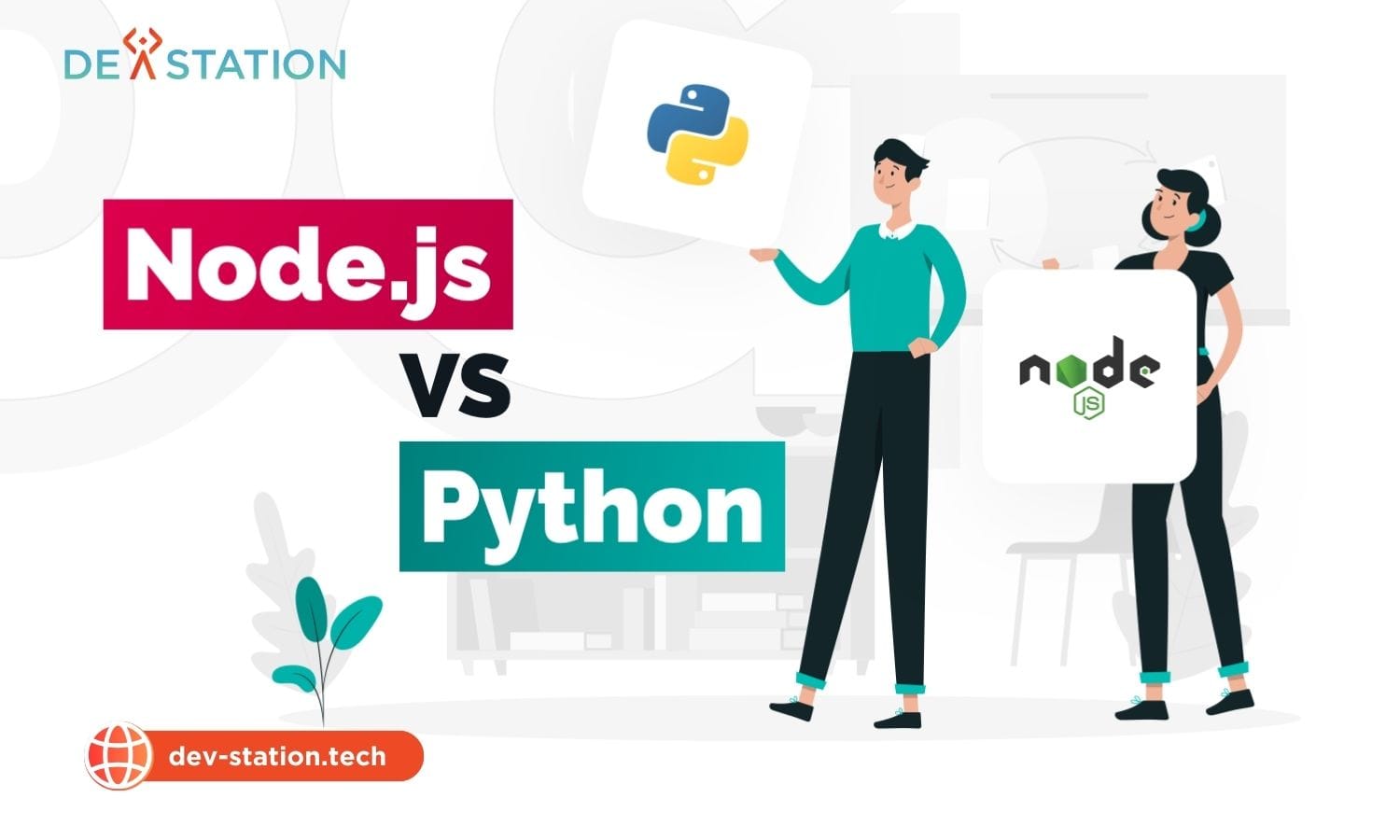Cloud application development services deliver unmatched scalability and cost efficiency, transforming how modern businesses operate with Dev Station Technology. Our custom cloud solutions accelerate your innovation and provide a reliable foundation for growth through superior cloud-based architecture and elastic infrastructure.
Contents
ToggleWhat Are The Top 5 Benefits Of Cloud Application Development?
The five primary benefits are significant cost reduction through optimized spending, unparalleled scalability to meet demand, enhanced security and compliance, accelerated speed to market for new features, and superior reliability with robust disaster recovery options.
In today’s digital-first economy, the ability to adapt, innovate, and scale is no longer a luxury—it is a prerequisite for survival. Businesses are increasingly moving away from traditional on-premise infrastructure, which is often rigid, expensive, and difficult to maintain. Instead, they are embracing cloud-native strategies to build applications that are resilient, efficient, and future-proof. Partnering with a specialist in cloud app development allows organizations to leverage these advantages without needing to build an extensive in-house team. Let’s explore the core benefits that make this transition a strategic imperative.
1. How Does Cloud Development Reduce Operational Costs?
Cloud development drastically reduces costs by eliminating upfront hardware purchases and maintenance expenses, shifting IT spending from a Capital Expenditure (CapEx) model to a predictable Operational Expenditure (OpEx) model.
Traditionally, launching an application required a massive upfront investment in servers, storage, and networking hardware. Beyond the initial purchase, companies had to budget for electricity, cooling, physical security, and a dedicated IT team for maintenance and upgrades. This CapEx model ties up significant capital that could be used for core business growth.
Cloud application development services flip this model on its head. By utilizing Infrastructure as a Service (IaaS) from providers like AWS, Azure, or GCP, you only pay for the resources you consume. This pay-as-you-go model offers tremendous financial flexibility. According to a 2023 report by Gartner, global end-user spending on public cloud services is projected to reach $679 billion in 2024, a 20.4% increase from 2023, highlighting the massive enterprise shift towards this model. For example, a startup can launch a new application with minimal upfront cost and scale its spending as its user base grows. This approach democratizes innovation, allowing smaller businesses to compete with established enterprises on a level playing field.
Moreover, this eliminates hidden costs associated with on-premise solutions, such as hardware depreciation, software licensing renewals, and emergency repairs. The resources previously allocated to managing physical infrastructure can be redirected toward innovation and improving the customer experience.
2. Why Is Scalability And Flexibility A Major Advantage?
Cloud applications provide elastic scalability, allowing businesses to automatically adjust computing resources to meet fluctuating user demand. This ensures optimal performance during peak times and cost savings during lulls.
One of the most significant limitations of on-premise infrastructure is its inability to scale efficiently. Businesses must provision servers for peak capacity, meaning most of the time, those expensive resources sit idle. Conversely, an unexpected traffic surge, like during a Black Friday sale or a viral marketing campaign, can crash the application, leading to lost revenue and damaged brand reputation.
A cloud-based solution solves this problem with elasticity. Cloud platforms are designed to scale resources up or down automatically based on real-time demand. This is often achieved through modern architectural patterns. For instance, a well-designed saas architecture leverages auto-scaling groups and load balancers to distribute traffic and add or remove server instances as needed. Netflix is a prime example; its entire global streaming service runs on AWS, seamlessly handling massive fluctuations in viewership as different regions come online and go offline throughout the day.
This flexibility also extends to development and testing. Developers can spin up new environments in minutes to test features, run experiments, and deploy changes without impacting the production environment, fostering a culture of rapid innovation.
3. How Does The Cloud Enhance Security And Compliance?
Major cloud providers invest billions in security, offering businesses access to enterprise-grade physical and digital security measures that are often unattainable for individual companies, along with tools to simplify regulatory compliance.
There is a common misconception that the cloud is less secure than on-premise data centers. The reality is quite the opposite. Providers like Amazon, Microsoft, and Google have world-class security teams and employ multi-layered security protocols, including biometric access controls, 24/7 monitoring, and redundant power systems. The 2023 Cloud Security Report by Cybersecurity Insiders found that 95% of cybersecurity professionals are at least moderately concerned about public cloud security, but this concern drives providers to offer increasingly sophisticated tools.
These platforms provide a suite of security services, including Identity and Access Management (IAM), advanced threat detection, and data encryption at rest and in transit. Furthermore, they offer compliance certifications for a wide range of global and industry-specific regulations like GDPR, HIPAA, and PCI DSS. This simplifies the compliance burden for businesses, as the underlying infrastructure is already certified. Partnering with experienced aws application development services ensures your application is built following security best practices from day one.
4. What Is The Impact On Speed And Innovation?
Cloud development accelerates innovation by enabling DevOps practices and providing access to managed services, allowing development teams to focus on writing code and delivering features rather than managing infrastructure.
In a competitive market, speed is everything. Cloud platforms are the foundation of modern DevOps, a culture and set of practices that automates and integrates the processes between software development and IT teams. Cloud-based tools for Continuous Integration and Continuous Delivery (CI/CD) automate the building, testing, and deployment of code. This allows organizations to release new features and bug fixes rapidly and reliably. A comparison of platform tools like azure devops vs github shows how integrated cloud services streamline this entire workflow.
Moreover, cloud providers offer a vast catalog of managed services, such as databases, machine learning APIs, and analytics tools. Instead of spending weeks setting up a database server, a team can provision a fully managed, scalable database in minutes. This abstraction of complexity is a core tenet of modern architectures like serverless architecture, where developers can deploy code without thinking about servers at all. This allows teams to experiment, iterate, and deliver value to customers faster than ever before.
5. How Does It Improve Reliability And Disaster Recovery?
Cloud platforms are inherently resilient, with built-in redundancies across multiple geographic regions. This makes it easier and more affordable for businesses to implement robust disaster recovery plans and achieve high application uptime.
For an on-premise application, building a true disaster recovery (DR) solution is incredibly expensive, requiring a second, fully operational data center in a different location. As a result, many businesses have inadequate DR plans, putting them at risk of catastrophic data loss and extended downtime.
Cloud providers operate data centers in multiple geographic locations known as Regions and Availability Zones (AZs). This global footprint allows businesses to design applications that are highly available and fault-tolerant. For example, an application can be architected to run across multiple AZs. If one data center experiences an outage, traffic is automatically rerouted to the others with no user-facing downtime. Architecting with a microservices architecture further enhances this, as the failure of one small service does not bring down the entire application. This level of reliability, once reserved for the largest global enterprises, is now accessible to businesses of all sizes.
How Do You Start Building A Cloud-Native Application?
Starting involves a five-step process: defining your business objectives, choosing the right cloud provider and services, designing a scalable architecture, adopting DevOps and CI/CD practices, and prioritizing security from the beginning.
Building a truly cloud-native application is more than just running a traditional app on a cloud server. It requires a fundamental shift in mindset and architecture. Here is a clear, step-by-step guide to get started:
- Define Business Goals and MVP Scope: Clearly identify the problem you are solving. Define the core features for a Minimum Viable Product (MVP) to launch quickly and gather user feedback. This clarity will guide your technical decisions.
- Choose the Right Cloud Provider: Evaluate AWS, Azure, and GCP based on your needs. Consider factors like service offerings, pricing, existing team expertise, and industry-specific compliance. For example, a retail business might prioritize a platform with strong e-commerce services, while a healthcare company would focus on HIPAA compliance.
- Design a Cloud-Native Architecture: Work with cloud architects to design a system that leverages cloud principles. This often means breaking down the application into smaller, independent microservices and utilizing serverless functions for event-driven tasks. This is where the expertise of a professional saas development company can be invaluable.
- Implement DevOps and Automation: Set up a CI/CD pipeline from day one. Use Infrastructure as Code (IaC) tools like Terraform or AWS CloudFormation to define and manage your infrastructure programmatically. This ensures your environments are repeatable, consistent, and easy to manage.
- Integrate Security at Every Stage: Adopt a DevSecOps mindset. Implement security best practices throughout the development lifecycle, including secure coding standards, automated security testing in your CI/CD pipeline, and robust identity and access management policies.
Why Should You Partner With Dev Station Technology?
You should partner with Dev Station Technology because we are cloud specialists who provide end-to-end services, turning your vision into a scalable, secure, and high-performing cloud application while you focus on your core business.
Navigating the complexities of cloud application development requires deep expertise. At Dev Station Technology, we live and breathe the cloud. Our team of certified cloud architects, DevOps engineers, and full-stack developers has a proven track record of designing, building, and managing successful cloud-native applications for businesses across various industries.
We offer a full suite of cloud application development services, from initial strategy and architecture design to CI/CD automation, migration, and ongoing managed services. We act as your dedicated cloud partner, ensuring your application is not only launched successfully but also optimized for cost, performance, and security for years to come.
Ready to unlock the transformative power of the cloud? Contact Dev Station Technology to discuss your project and discover how we can accelerate your journey to digital excellence. Visit our website at dev-station.tech or email us directly at sale@dev-station.tech to start the conversation.





